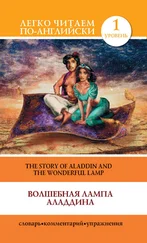Edmund Gardner - The Story of Siena and San Gimignano
Здесь есть возможность читать онлайн «Edmund Gardner - The Story of Siena and San Gimignano» — ознакомительный отрывок электронной книги совершенно бесплатно, а после прочтения отрывка купить полную версию. В некоторых случаях можно слушать аудио, скачать через торрент в формате fb2 и присутствует краткое содержание. Жанр: foreign_antique, foreign_prose, на английском языке. Описание произведения, (предисловие) а так же отзывы посетителей доступны на портале библиотеки ЛибКат.
- Название:The Story of Siena and San Gimignano
- Автор:
- Жанр:
- Год:неизвестен
- ISBN:нет данных
- Рейтинг книги:3 / 5. Голосов: 1
-
Избранное:Добавить в избранное
- Отзывы:
-
Ваша оценка:
- 60
- 1
- 2
- 3
- 4
- 5
The Story of Siena and San Gimignano: краткое содержание, описание и аннотация
Предлагаем к чтению аннотацию, описание, краткое содержание или предисловие (зависит от того, что написал сам автор книги «The Story of Siena and San Gimignano»). Если вы не нашли необходимую информацию о книге — напишите в комментариях, мы постараемся отыскать её.
The Story of Siena and San Gimignano — читать онлайн ознакомительный отрывок
Ниже представлен текст книги, разбитый по страницам. Система сохранения места последней прочитанной страницы, позволяет с удобством читать онлайн бесплатно книгу «The Story of Siena and San Gimignano», без необходимости каждый раз заново искать на чём Вы остановились. Поставьте закладку, и сможете в любой момент перейти на страницу, на которой закончили чтение.
Интервал:
Закладка:
In the meanwhile Urban had hired the Italian mercenaries of the Company of St George, commanded by Count Alberico da Balbiano. On April 29th Alberico gained a complete victory over the Breton and Gascon soldiery of the Clementines at Marino, and the French governor of Sant’ Angelo surrendered to the Senator of Rome, Giovanni Cenci. Catherine is said – and a passage in one of her letters seems to confirm it – to have been the means of effecting the surrender. At her instigation the Pope went barefooted from Santa Maria in Trastevere to San Pietro in solemn procession, to give thanks before returning to take up his abode in the Vatican – an act of humility that aroused astonishment (strange reflection on the pomp of the Curia!) as something that had not been seen for ages. To the magistrates of the Roman Republic she wrote a letter on behalf of the victorious soldiery, which Tommaseo characterises as “worthy of the name of Rome.” 43 43 Letter 349.
Then, flushed with victory, she addresses the King of France, in hopes that he may still be won over; she makes one more flaming, impassioned appeal to the Queen of Naples, and then – sole blot, I think, in all this blameless life – co-operates with Urban, in her letters to the King Louis and his cousin, Charles of Durazzo, in his attempt to raise the power of Hungary and Poland upon Giovanna’s head. 44 44 Letters 350, 362, 357, 372.
Her last extant letter to Urban himself is to urge him to adopt a mild and generous policy towards the Roman People. “You must surely know,” she says, “the character of your Roman children, how they are drawn and bound more by gentleness than by any violence or by harshness of words; and you know, too, the great necessity that is yours and Holy Church’s, of preserving this people in obedience and reverence to your Holiness; for here is the head and the beginning of our faith.” 45 45 Letter 370.
A furious riot broke out at the beginning of 1380. The Roman populace rose in arms and assailed the Vatican, threatening the Pope’s life. Catherine interposed and stilled the tumult. This was her last public action.
She was spared the sight of Urban’s fall, and was not doomed to witness the shame, the blood and the madness in which “her most sweet Christ on earth” ended his unhappy pontificate. Fearful visions of demons began to assail her, mingling with the celestial visitations of her Divine Spouse. Her bodily sufferings became unendurable. She cried to God to receive the sacrifice of her life in the mystical body of the Church. Praying in San Pietro on Sexagesima Sunday, it seemed to her that the Navicella – the Ship of the Church – was laid upon her shoulders, and that it crushed her to death. The few weeks of life that remained to her were one prolonged martyrdom, out of which we have her last letter 46 46 Letter 373.
– written on February 15th, 1380 – her farewell to Frate Raimondo, full of mystical exultation in her own sufferings, tanti dolci tormenti corporali . But all who approached her wondered at the tranquillity and the sweetness with which she spoke, and “albeit she was excessively afflicted in her body, her face remained always angelical and devout with a holy gladness.”
At last on April 29th, 1380, the Sunday before the Ascension, she passed away, surrounded by her spiritual family and leaning upon Alessia Saracini, uttering “certain most profound things,” writes Barduccio, “which because of my sins I was not worthy to understand.” 47 47 Barduccio’s letter to a nun at Florence, describing every detail of Catherine’s death, will be found in the Appendix to the Leggenda .
To Stefano Maconi, who had hastened from Siena to stand by her side; to Monna Lapa, who had taken the habit like her daughter and daughter-in-law; and to each of the others, she gave a separate charge as to their mode of life after she should be dead. “And she prayed with such great affection that not only our hearts as we listened, but the very stones could have been broken. Finally, making the sign of the Cross, she blessed us all; and so to the last and most desired end of life she drew near, persevering in continual prayer and saying: ‘Thou, Lord, dost call me, and I come to Thee; I come not through my own merits, but through Thy mercy alone, the which mercy I ask from Thee in virtue of Thy blood.’ And then, many times, she cried: Sangue, sangue! At last, after the example of the Saviour, she said: ‘Father, into Thy hands I commend my soul and spirit.’ And so, sweetly, with her face all angelical and glowing, she bowed her head and gave up her spirit.”
CHAPTER III
The People and the Petrucci
AFTER the expulsion of the Riformatori in March 1385, a new supreme magistracy was instituted to rule the Republic. It was composed of ten citizens – the “Signori Priori, Governatori della Città di Siena” – who held office for two months. Four of these priors were of the Nine, four of the Twelve, and two of the People. A new order – the Monte del Popolo – was formed to include those plebeians, or Popolani of the Greater Number, who had not shared in the government of the Riformatori; and it gradually rose in importance, reinforced in later years by families of nobles who became popolani and by others of the lower classes who had come to Siena from elsewhere.
A turbulent and unsettled period followed, of incessant plots against the new government and of disastrous wars. In November 1385, Siena joined in a league, offensive and defensive, with the Communes of Bologna, Florence, Pisa and Lucca, against the wandering companies of mercenaries. But presently that never-healed wound, the question of Montepulciano, opened again, and a prolonged war with Florence followed in consequence. Both Cortona and Montepulciano were lost to Siena. In 1389 the Sienese allied themselves for ten years with Giovanni Galeazzo Visconti, who had dethroned his uncle Bernabò and was now manifestly intending to conquer all northern and central Italy. A Sienese poet, Simone di Ser Dino Forestani (“il Saviozzo”) hailed him as the coming deliverer of the Italian nation in a noted canzone, which Carducci has called the last cry of Ghibellinism. A number of the Malavolti and Tolomei, headed by Messer Orlando Malavolti, chose exile in the following years rather than see their country fall into servitude. Giovanni Galeazzo was created Duke of Milan by the Emperor Wenceslaus in 1395; and, when the end of the term of the alliance drew near, the Sienese found themselves so exhausted with war, famine and pestilence that in 1399 they formally surrendered the independence of their city, with its contado and district, to the Duke and his successors, swore obedience and fidelity to him in the persons of his ambassadors, and hailed their new yoke with wild festivities. The Duke died in 1402; he had just taken Bologna and intended, as soon as Florence fell into his hands, to be crowned King of Italy. His newly acquired dominions fell to pieces. In November 1403, the Salimbeni (who, in opposition to the Malavolti and Tolomei, had been among the foremost in introducing the ducal sovereignty into Siena) and the heads of the Dodicini, probably instigated by the Florentines, called the Sienese to arms to recover their liberty. The Noveschi and People opposed them. There was a struggle in the Campo, an attempt to capture the Palazzo; but Francesco Salimbeni was killed and the Dodicini expelled from the government. In the following year the liberation of Siena was peaceably effected. Peace was made with Florence in April, and, the ducal lieutenant having left the city, the Sienese annulled the suzerainty and all the authority that had been given to the Duke of Milan and his successors, and commanded that his arms, wherever they had been set up in the dominions of the Republic, should be completely obliterated. But Orlando Malavolti returned to his native city only to die. On his way to salute the Signoria he was treacherously murdered in the streets by the hirelings of those who had seized upon his possessions, which they hoped thus to keep in their hands.
Читать дальшеИнтервал:
Закладка:
Похожие книги на «The Story of Siena and San Gimignano»
Представляем Вашему вниманию похожие книги на «The Story of Siena and San Gimignano» списком для выбора. Мы отобрали схожую по названию и смыслу литературу в надежде предоставить читателям больше вариантов отыскать новые, интересные, ещё непрочитанные произведения.
Обсуждение, отзывы о книге «The Story of Siena and San Gimignano» и просто собственные мнения читателей. Оставьте ваши комментарии, напишите, что Вы думаете о произведении, его смысле или главных героях. Укажите что конкретно понравилось, а что нет, и почему Вы так считаете.












